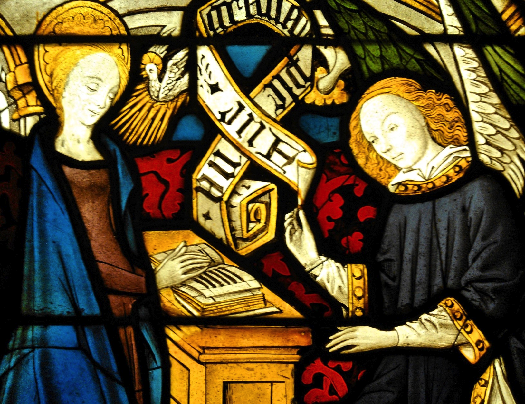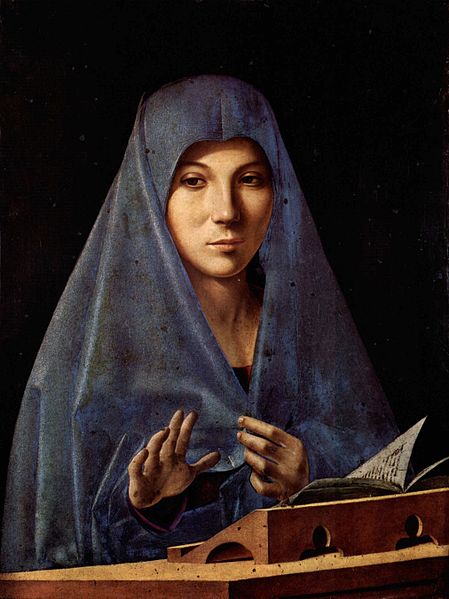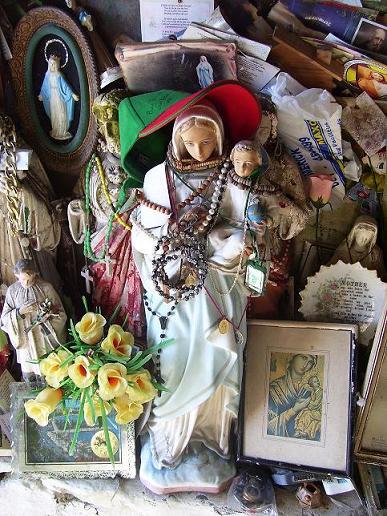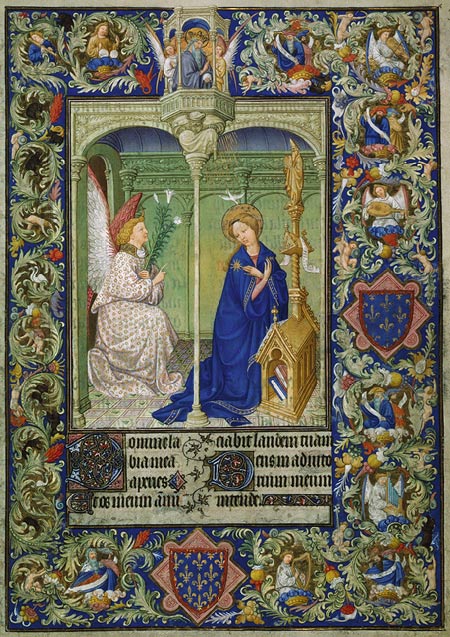
LIFE AS MYTH
![]()
JOURNAL
![]()
JOURNAL 2014
The poetics of grace
On shells and nests
![]()
SPRING 2014
The sun, the moon, and the stars
![]()
LIFEWORKS
![]()
ATLAS
![]()

SPRING 2014
A LITTLE BOOK OF HOURS
The annunciation, artist and date unknown. Metropolitan Museum of Art, New York; The virgin annunciate, Antonella da Messina. 1476. Palazzo Abatellis, Palermo; A closeup of devotional offerings left by pilgrims at St. Brigid's well. Liscannor, Ireland; The annunciation, Limbourg Brothers, The Belles Heures of Jean of France, Duke of Berry*. Ink, tempera, and gold leaf on vellum; The Cloisters Collection. Metropolitan Museum of Art. ca. 1406-09. *Item, une belles Heures, tres bien et richement historiees (Item, a beautiful hours, very well and richly illuminated). In the Middle Ages books were usually displayed on ornate stands [detail from The Belles Heures]. Since books were scarce and quite valuable it was not unusual for books to be chained to their stands as a measure against theft.
MODERN DEVELOPMENTS IN MARIOLOGYThe book of hours is a Christian devotional of writings, psalms and prayers, popular in the Middle Ages and intended for the laity. The books were usually in Latin though vernacular forms were not uncommon. The practice of reciting the hours was meant to provide the individual with a more immediate relationship with God and the Virgin Mary. The standard components included a calendar of church feasts, the Hours of the Virgin, the Hours of the Cross, the Hours of the Holy Spirit, the Office for the Dead, and the Suffrages.
The little office of the blessed Virgin Mary was and is a weekly devotional cycle consisting of psalms, hymns and sacred readings. It began in the eighth century as a monastic spiritual practice. By the tenth century it was in widespread use as a standard text in the book of hours. By the fourteenth century it was obligatory practice for all clergy.
This ritual remained common practice until mid-twentieth century when Pope Paul VI recommended that practitioners use the Divine Office in lieu of The little office of the blessed Virgin Mary. This decision by the Pope was consistent with other changes in the church calendar during the Second Vatican Council. Seen in the overall context of Pope Paul's many teachings on Mariology, the shift away from the Little office of the blessed Virgin Mary was an attempt to consolidate ritual practice rather than devalue the integral status of Mary within the Roman Catholic Church.
After the conclusion of the Second Vatican Council, the Little Office endured in print and practice as an alternative to The Divine Hours. This option accommodated those who simply preferred the Little Office over the Hours and also those who choose to center their daily spiritual practice around the Virgin Mary.
Marian devotion also found expression outside the liturgical hours. During the twentieth century, for the first time, the Roman Catholic Church recognized two Marian years. The first was in 1954 and celebrated the 100th anniversary of the of the proclamation of the dogma of the immaculate conception.
In 1987 Pope John Paul proclaimed the second Marian year, with the express purpose of embracing spiritual practices which the Second Vatican Council had found "primitive". The Pope had a particular affinity for the Virgin, invoking her intercession in prayer and making journeys to Marian sites. With the institution of the second Marian year, the Pope encouraged a return to the "warmth and simplicity" in spiritual practice lost after the Second Vatican Council. He placed an emphasis on liturgical tradition and celebration through the restoration of public processions along with pilgrimages to sacred sites dedicated to Mary.
The Virgin Mary remains an enduring part of spiritual practice in the twenty first century. Her shrine at Lourdes draws 5,000,000 pilgrims yearly. Each December millions more journey to the Basilica at Tepeyac Mexico for the feast day of Our Lady of Guadalupe. Mary is also the patron saint of numerous countries, serving as both intercessor and protectoress of her devotees.




